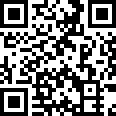
Privacy statement: Your privacy is very important to Us. Our company promises not to disclose your personal information to any external company with out your explicit permission.
![]() November 24, 2021
November 24, 2021
What's the best sewing machine for denim? With so many options on the market, it can be hard to pick one that's right for you and your sewing needs! Sewing denim at home with a domestic sewing machine may seem like an insurmountable task, but using the right equipment and keeping your goals in mind will make the whole process easier and less intimidating.
1. First Things First
Before you start your project, make sure you have everything you need—like needle size, thread color, sewing machine foot, etc. Gather all these items before diving in. You can create your own pattern or use an existing one. Or better yet, follow along with one of our DIY denim projects! Check out how we made our first pair of jean shorts here! The main focus will be on sewing seams and folds, so practice on scraps until you feel confident. Start slow—it's not worth ruining your favorite pair just because you're trying to rush through. This is also a good time to check that your sewing machine is set up properly and that it's working well.
Get familiar with its features—and what does what! Things will go much smoother if you know which dial is for speed and which for width (and they may vary depending on where you bought it!). Set up things like pins, needles, scissors, seam ripper or other such tools beforehand as well. It'll save you time once you actually get going.
2. Safety Tips for Sewing Machines
When you are starting out, it is best to learn how to sew on a machine with built-in safety features. If you are not used to sewing machines, you may accidentally injure yourself while working with one. A machine with safety features will protect your hands from getting caught in moving parts. Even experienced seamstresses should exercise caution when using sewing machines. It's also important to make sure you know how your machine works before attempting anything advanced like sewing denim jeans or making tailored jackets or dresses.
3. What is a Domestic Sewing Machine?
A domestic sewing machine is also known as an electronic sewing machine or just an electric sewing machine. A domestic sewing machine looks different from other kinds of sewing machines, because it uses electricity instead of foot pedals. Many people choose to sew with domestic machines because they are easy and convenient, but some people prefer hand-crank machines for their fine stitches. Choose your style of sewing based on what you want your finished product to look like, rather than which type is easiest or quickest.
Since denim is thick and sturdy, you will need a machine that can stand up to tough materials. For best results when sewing denim using your domestic sewing machine, consider domestic sewing machine can be used for a wide variety of projects around your home, including clothing alterations and adding lace edges to pillows.
4. Selecting the Right Sewing Machine
If you're a new seamstress, learn how to use your machine correctly before attempting more complicated tasks such as quilting or sewing denim jeans. Once you have mastered basic sewing techniques, you can try out specialty fabrics such as leather and suede.
Selecting your first sewing machine can be an overwhelming experience. There are so many types of machines that it's difficult to know where to start. Thankfully, choosing one is really easy once you understand what features are available and what they do. In fact, there are only three things you need to consider when purchasing a domestic sewing machine: purpose, location and budget. So let's get started!
Purpose: What kind of sewing will you be doing? If you want to sew denim jeans or other durable fabrics on a regular basis, it might be worth investing in an industrial-grade machine with greater capacity. However, if you just need to use your sewing machine for basic tasks like hemming clothes and repairing seams then a cheaper standard model will suffice.
Location: Where do you plan on using your sewing machine? If space is limited, such as in an apartment or dorm room, then a portable option like an electric travel sewing machine might be best for you. Otherwise, if you have plenty of storage space available, it's worth considering investing in a larger domestic sewing machine which can handle heavier fabrics with greater ease.
Budget: Of course, price should also play into your decision-making process. Most affordable domestic sewing machines cost between $50 and $200 while top-of-the-line models will run over $1000. There are many excellent choices in every price range so make sure to research products before committing!
5. Determine the Right Thread Type
The type of thread you'll need depends on your sewing machine and your fabric. Take a close look at your denim; is it 100% cotton? If so, you'll want to use cotton thread with a weight similar to that of denim. In most cases, though, denim is mixed with spandex or polyester—or even worse: artificial fibers—so unless you have good reason for choosing otherwise, choose polyester thread in whatever color matches best with your denim. (And if all else fails, try white.)
Next, determine what stitch type will give you both decorative and functional results. For home-sewn items like dress pants and denim jeans, we recommend zigzag stitches (3mm width), which help keep seams in place while providing an attractive look. Alternatively, straight stitches would also work well depending on your desired results.
Finally, decide how thick or thin you want your stitching to be by adjusting your sewing machine's needle gauge setting. Typically medium to heavy weights are used for hems and stress points, while lighter weights are better suited for decoration only—try out several different needle settings until you find one that gives you an aesthetic balance between sturdy construction and effortless detail.
6. Determine Fabric Type
Not all fabrics are suitable for sewing, and denim is certainly one of them. Before you begin, make sure you know whether your fabric is right for sewing. Most cloth manufacturers provide care instructions on their website or accompanying tags that include advice on which sewing techniques will damage their product. You can also consult with an experienced local tailor or seamstress to determine what's best for your project.
In general, cotton blends and linen-cotton blends work well as jeans materials—provided they're not excessively heavy. If in doubt, test out your material first by running a few practice stitches to see how it holds up under pressure; if your thread breaks or stitching falls apart easily, try another material instead. This may seem like common sense, but mistakes cost time and money so be careful!
100% Cotton Jeans: We recommend choosing 100% cotton denim when sewing your own jeans. Though many might argue that using blended fabrics has its advantages (such as added strength or extra flexibility), home sewers typically prefer 100% cotton for its high durability. For most projects, 12oz will work just fine; however, you can experiment with different weights depending on how thickly you want your clothing to be stitched together.
Even lighter fabric won't tear if it's held together by strong stitching, so don't worry about adding unnecessary weight to your project. Ideally, if you're making clothes from scratch, consider looking for pre-washed material—it should already have stretch built in so you can skip steps #3 and #4 below.
If your budget doesn't allow for new denim, try checking secondhand shops to see what type of used garments are available in your area. Most types of denim can probably be used, but avoid light-colored garments since they'll likely show off any visible stitches after washing.
7. Determine pattern for each sewing process
Decide what you're going to make. Determine which pattern you need for each sewing process (for example, dungarees require patterns for both front and back pieces as well as patterns for each leg piece). Measure your existing jeans; use these measurements to create your patterns. It's easiest if you lay your old jeans flat on a hard surface with a hardcover book or something similar sitting on top of them so that they don't get stretched out while you measure them. Refer to our guide on how to sew pants from scratch for more information about creating sewing patterns.
For step-by-step directions, check out our free tutorial on how to sew a pair of selvedge denim dungarees . Seam allowance: 1⁄2 Sewing machine vs serger: If you have a domestic sewing machine , it may not have a serger function. Because denim can be difficult to sew by hand (not impossible), we recommend using a sewing machine that has built-in stitches designed specifically for sewing seams and finishing raw edges – such as decorative or reinforced stitching – rather than trying to sew all of your seams by hand.
As long as you're using a heavy thread and following our tips below, we think even an entry-level basic model will do just fine. But know that high-end models, like Bernina machines , often come with different attachments for different tasks. Do you want one machine that does everything? Or are there specific things you want to sew over and over again?
Consider how much time/money/trouble you'll save in the future before investing in a higher quality model. Just remember, expensive doesn't necessarily mean better! Either way, put some thought into what you expect to sew. Then do some research into finding a sewing machine that best meets those needs at a price point that works for you.
Buy fabric + notions : Once you have your fabric , keep reading here for full sewing instructions! Remember! Before doing anything else, mark where you want your pockets on both thighs of your jeans.
The above is the Tips on How to Sew Denim at Home 2022 we have listed for you. You can submit the following form to obtain more industry information we provide for you.
You can visit our website or contact us, and we will provide the latest consultation and solutions
Send Inquiry
Most Popular
lastest New
Send Inquiry
Send Inquiry

Mr. Alston Chen
Tel:86-769-18902616250
Fax:86-769-88285668
Mobile Phone:+8618902616250
Email:sales02@chuanghuisew.com
Address:26-28 Zhenglu south, chuancha village, Machong Town, Dongguan City, Guangdong Province., Dongguan, Guangdong
Related Products List
Mobile Site


Privacy statement: Your privacy is very important to Us. Our company promises not to disclose your personal information to any external company with out your explicit permission.

Fill in more information so that we can get in touch with you faster
Privacy statement: Your privacy is very important to Us. Our company promises not to disclose your personal information to any external company with out your explicit permission.